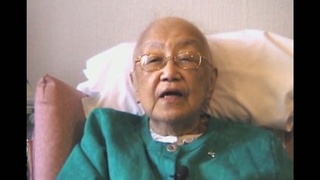Interviews
Impressions from interviews with Issei women (Japanese)
(Japanese) So when they left Japan, for example, some of them were picture brides… like in the early 1900s, right? They’d have been in their 20’s or so. So I would ask questions like, “How much about America did you know at that time?” or, “Weren’t you afraid to come to the States without knowing much about America?” and most of them would answer, “No, not really.” You’d think that they would say that they were afraid, right? However, that wasn’t the case at all. Also, there are those who said, “many of us were disappointed when we came over here [to America], but this was something I chose to do.” They had this attitude of independence. That, I thought, was something very admirable.
Date: October 7, 2005
Location: California, US
Interviewer: Ann Kaneko
Contributed by: Watase Media Arts Center, Japanese American National Museum













